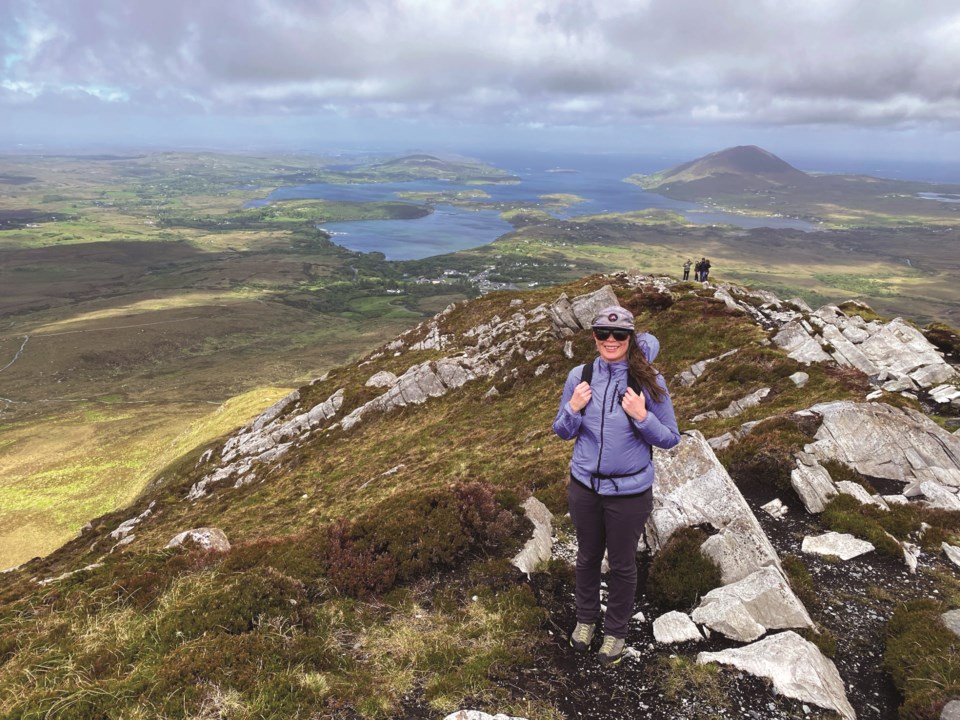The title of this column has all manner of connotation. Does it reference an ocean or a passage? A lifestyle? A behaviour? A place? As it turns out, all of the above. And, on a recent trip to Ireland, it also shows itself to be a genius instance of branding that lives up to its significant promise.
Following a precipitous decline in visitation during the financial difficulties of 2007-2010, Fáilte Ireland (the country’s tourism development agency) devised the Wild Atlantic Way (WAW) as a new “experience” to present the west coast of Ireland as a compelling international tourism destination. Stretching 2,500 kilometres from the Inishowen Peninsula in County Donegal to Kinsale in West Cork, the WAW comprises coastlines and hinterlands of nine counties whose fabled urban gateways include Cork, Killarney, Limerick, Ennis, Galway, Westport, Donegal and Letterkenny (the original Letterkenny—not the one in the eponymous viral Canadian sitcom). As an overarching brand that individual destinations and businesses can use to leverage visibility in the international marketplace, the route stitched together pre-existing roads, lanes, cycling and walking routes as well as dozens of small villages and cultural, historical and natural attractions. These 2,500 km are both straightforward and convoluted—often at the same time, such that you can roll up to an intersection on ribbon-thin country roads where WAW signs point in all four cardinal directions, none a disappointing tangent.
This unifying proposition comes with a singularly unassailable logo (two side-by-side white “Ws” on a blue background construct both the acronym and a train of ocean waves) and three overarching themes: Spirit of Adventure (Adventure); Life Shaped by the Atlantic (Culture), and Where Land and Sea Collide (Landscape and Seascape). It was a big, bold and complex idea across a large and diverse region. But buy-in was huge. And it worked.
It’s also spectacular. Which is how we found our way to it while researching hiking around the North Atlantic. There were many choices—Iceland, the Faroes, Hebrides, Scotland etc.—but two things tipped the scale in Ireland’s favour: it actually has decent mountains, and May weather in its southwest, bathed by the benevolent Gulf Stream, would at least be a few degrees warmer even if it were bad.
The plan was to spend zero minutes in Dublin and drive directly to the west coast to hole up somewhere and get over jet lag. Research turned up the nicely isolated 200-year-old Leenane Hotel overlooking Killary Harbour in the middle of the Connemara Mountains, themselves in the middle of nowhere. It was a straight two-hour shot to Galway on a multi-lane highway that, other than driving on the left, was reminiscent of North American thoroughfares. Once off of it, however, and having finagled our way around Galway to head north through Oughterard, the roads narrowed perilously until, at the final turn in Maam Cross, we were on the 1.5-lane rural standard that is capable of terrifying anyone from a land of country-road largesse. You’re convinced these roads aren’t wide enough to accommodate you and oncoming traffic, but amazingly they do; everyone unconsciously scooches left but people also frequently pull over and fully stop to let others squeeze past. So how do you know who’s supposed to pull over? You don’t, until you need to, then you find some purchase in the grass to let the other by. In two weeks of plying these hedge-crowded laneways only once did I see someone have to back up because they didn’t pull off when they had the chance.
Our first afternoon on the WAW ticked all the boxes: mountains, lake vistas, thatch cottages, castle ruins on every hillock, a road spotted with somnolent sheep and, finally, the ocean itself in the guise of Killary Harbour—the island’s only true fjord. Though the plan was to take it easy the first day, decent weather meant a 10-km hike in Connemara National Park planned for two days hence was bumped up. We headed up Diamond Hill on a tract wider than the road that brought us to it but which soon petered out to a sheep path and then, with gale-force winds tearing at our very existence, a rock scramble to the summit. Here, the view was fantastic—a look north and south along the wildest reaches of the WAW.
The rest that should have been took place the next day, and involved inventorying masses of beautifully blooming (but horribly invasive) rhododendron, en route to the area’s marquee tourist destination, Kylemore Abbey. Built by rich MP Mitchell Henry as a summer retreat for a wife who subsequently died of a mysterious fever in Egypt, he was left bereaved holding onto a massive estate complete with enormous Victorian walled garden that employed half the village and drew visitors from miles around. What else could he do but also erect a miniature cathedral in her honour with marble details from the four corners of Eire? He’d eventually sell the entire thing to peers who didn’t have the spleen to care for it. As it fell into ruins it attracted the ascetic Benedictine order, whose love of large edifices ultimately restored Kylemore Abbey and its strolling gardens to the tour-bus-fed cash cow it is today—a wild story in its own way.
Next time: The Burren, Dingle Peninsula and West Cork.
Leslie Anthony is a Whistler-based author, editor, biologist and bon vivant who has never met a mountain he didn’t like.




